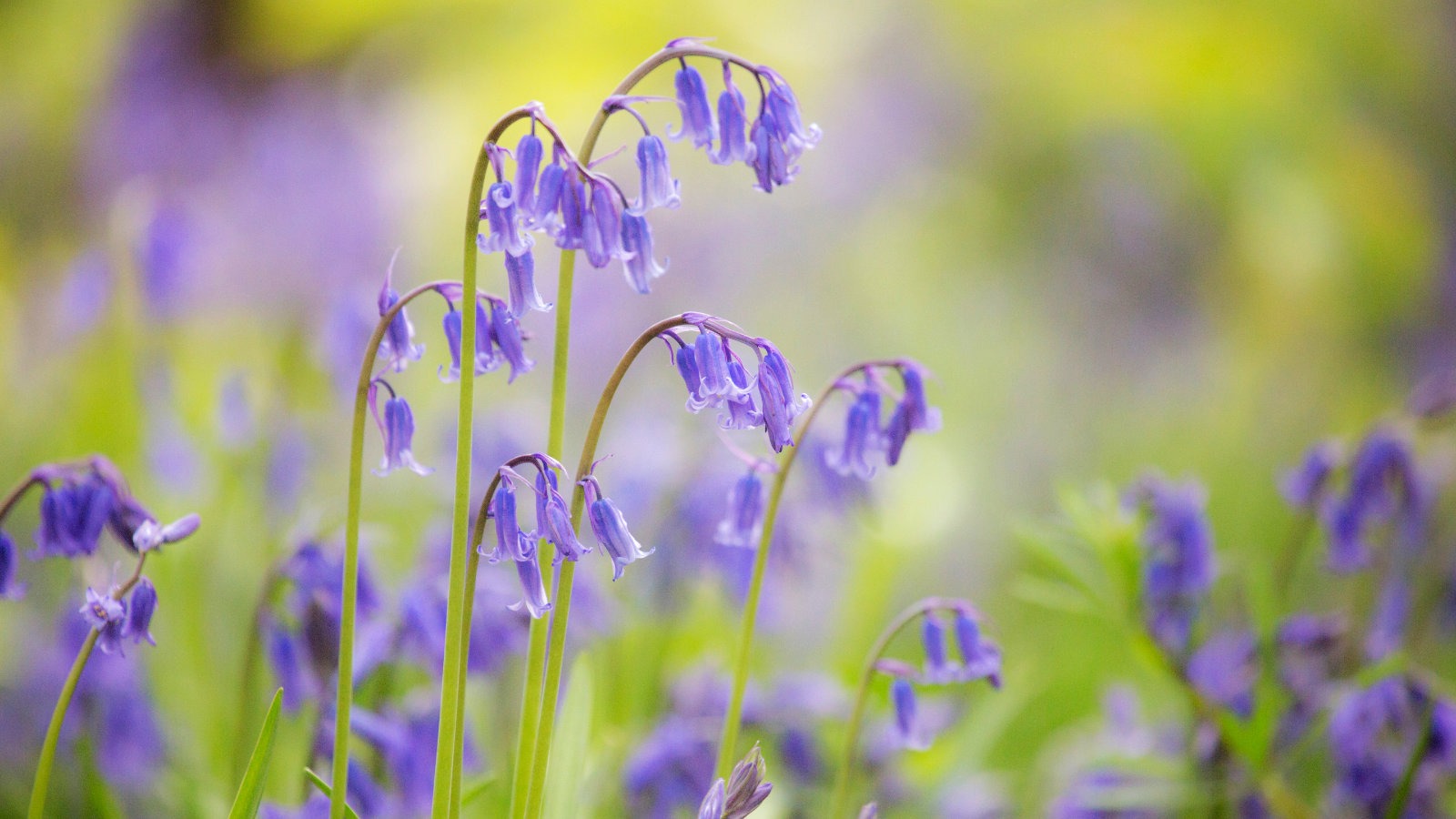A carpet of Bluebells covering the floor of an ancient woodland is probably one of the most quintessential sights of the British countryside in spring. The Bluebell, or Wild Hyacinth, as it is known as in Scotland, produces shoots at the beginning of January, with the flowers starting to appear on the plant from April to June, creating vast mats of foliage on the woodland floor, before the trees start to block out the spring light with their new leaves.
Unknown to most of us, there are several species of our familiar Bluebell to be found in and around our green areas. The two most common: our humble native Bluebell that is characteristic of woodlands, hedges, meadows and cliffs, and the Spanish Bluebell that grows in our gardens and hedgerows when intentionally placed there. Although common in much of Britain and Ireland, Bluebells are rare in the rest of Europe and absent from the rest of the world. The population in the UK represent about 30% of the global population and the species has greatly declined over the past 50 years and is considered globally threatened.
Latin name: Hyacinthoides non-scripta
Identification
- Plant Height: Up to 50cm
- Leaves: It’s leaves cluster at the base and grow in narrow shaped belts, up to 45cms in length and in varying hues of luscious green, while the stems produced grow up to 30cms and bend over at the top, with the flowers being produced on one side of the stem only.
- Flowers: Having stayed dormant throughout the winter months, in a juicy white bulb just below the surface layer, this delightful herb produces a succulent stem of about 12-18 inches long and covered in fragrant, bell-shaped flowers that hang downwards and vary in shades of blue, purple and even white!
- Habitat found: Woodland and shady coppiced areas.
- Flowering time: April to June.
- Attracts: Bees, wasps, greater bulb-fly

In the garden
The presence of large numbers of bluebells is often used as an ‘indicator species‘ to identify where once ancient woodland stood. The presence of Bluebells in hedgerows and under bracken on pastures may show that the land was once covered in woodland which has since vanished. If you have found Bluebells in your garden it may indicate that your garden may well have been a lovely woody area, filled with lots of native flora and fauna, so it would be worth encouraging them to spread. Even though you can pick the flowers try not to trample on the plant itself, as it doesn’t like it! Another thing our native blue beauty doesn’t tolerate is waterlogging and vigorous growing grasses so keep this little gem away from your pond and wild flower meadow! The black seeds produced at the end of the growing season may survive in the ground for several years and can germinate once your garden produces the right conditions and spread quickly. This scented herb is loved by bees and other creepy crawlies so if you have the right spot for it, try and encourage it!
Did you know?
Our wild Bluebell has had many uses throughout the centuries. One such use was for bookbinding. By crunching up the bulb and adding water it creates a gluey substance that, when set, is a strong adhesive and keeps silverfish away from your precious pages! Like the Foxglove, this herb is toxic (so don’t ingest it) but yet again it has medicinal qualities and is used for its diuretic and styptic properties. This toxicity has also cultivated many a superstitious and folklore belief, such as if you were to wander into a bluebell ring you would soon fall under a fairy enchantment and die! Some also believed that by wearing a necklace of bluebells you would only speak the truth and by turning a flower inside out you would be with the one you loved. In some parts of the country you may also hear people calling Bluebells Auld Man’s Bells, Calverkeys, Jacinth, Wilde Hyacinth or Wood Bells, so watch out, it may cause confusion! In the UK our charming Bluebell is highly protected under the wildlife and countryside act and landowners are prohibited from removing or selling wild Bluebells and it is a criminal offence to remove the bulbs or trade the seeds of a wild plant. So if you have them in the garden give them lots of love and attention!